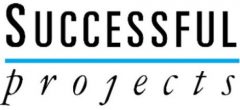Trends
In my first blog post exploring trends in project management, we looked at employment trends and trends in new ways of learning. In this second post let’s explore two more trends including emerging tools, artificial intelligence and the changing face of teams.
Emerging Tools/ Artificial Intelligence
It seems like there is an app for everything and project management is no exception. I cannot tell you how frustrating it is as a project manager to get bogged down with simple repetitive tasks that are tedious and boring. Enter AI – you hear it being discussed everywhere and it’s only going to become more pervasive. “An Accenture survey of 2,000 top-level executives found that 77 percent of them expected employees and machines to work together, side-by-side in a collaborative way. These executives stated they expected to focus on training their machines as much as they do on training people.” So sure, AI has its impacts in medical, shopping and in automotive, but Project Management? Sure, we can see AI’s impacts are filtering down to project management right now in the form of tools and resources. Many tools on the market today are taking these repetitive tasks and automating them through bots and other AI software which helps with workflow, interactions with resources and responding with insights and suggestions. Another popular tool trend is toward incorporating Kanban Boards. Kanban is a Japanese word that translates to billboard in English. Kanban is a methodology itself with its roots in Lean and Manufacturing. We are now seeing it’s visual tool, that helps to manage workflow, increasingly being integrated into other frameworks in order to embrace a more efficient way to limit work in progress and avoid multitasking, while encouraging collaborative problem-solving.
The Changing Face of Teams
In Peter Smith’s model of personal responsibility, employees with a high level of autonomy and alignment are more motivated and engaged. Research from Gallup found that employees who spend at least some time working remotely are more likely to be engaged in their jobs. And, being engaged in our jobs is a key motivator! Companies are embracing the use of distributed teams, and remote work especially post pandemic. As this trend grows, expect organizations to invest in technology that promotes communications over a wide variety of platforms. These new ways of working also impact the way we work together in teams. To coin a US military term, we are living in an increasingly VUCA World (volatile, uncertain, complex, ambiguous). Companies are finding that is it hard to survive if they are slow to react and that they need to behave and adjust like a start-up. With influences from Agile, teams are becoming more empowered, self-organizing, self-managing and cross-functional. Teams are starting to be more autonomous and set their own goals and make their own decisions while working within an overall strategy. They also teach themselves through virtual conferences, meetups, and similar events to teach and share information. I have worked remotely for many years and it has had its challenges but it remains my preferred method of work. And, although primarily through remote interactions, I also love working in teams and the trends I am seeing are exciting and empowering.
There are so many exciting and often times mind-blowing advancements occurring in the world. As project managers, it is so important to keep an eye on the future and try to understand how these changes may introduce negative risks or opportunity into your projects and your career. I’d love to hear your feedback on what trends in employment and learning will impact us as project managers and what we should be doing to prepare and position our projects for SUCCESS.

